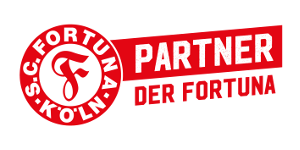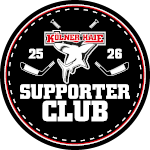Temporary Housing in Dusseldorf
With up to 640,000 inhabitants, Düsseldorf is the state capital of North Rhine-Westphalia (NRW). The Rhine metropolis is one of the five most important and internationally intertwined economic centres in Germany. Düsseldorf is the second largest banking and stock exchange city after Frankfurt. Accordingly, many (listed) companies have their headquarters here. Living in Düsseldorf is very attractive and offers a high standard of living. Düsseldorf is also known worldwide as the “city of fashion”. Many luxury fashion labels have placed their stores mainly around and on the Königsallee (“Kö”). The Kö is not only a popular destination for Düsseldorf inhabitants, but also for tourists when it comes to shopping. Düsseldorf is also a trade fair city and a leading German location in the media industry, auditing, corporate and legal consulting, telecommunications and retail.
Popular districts and hotspots in Düsseldorf
Düsseldorf is divided into 50 quarters, all of which have a unique charm. These 50 quarters belong to ten city districts, which are also numbered. In order to give you an overview, we have compiled the most popular districts as well as trendy hotspots and tips.
Where is the best place to live? And what makes up the individual quarters? In the following we give you information about this quarters
- Altstadt (Old Town)
- Carlstadt
- Pempelfort
- Derendorf
- Friedrichstadt
- Düsseltal
- Flingern
- Unterbilk (harbour) and Oberbilk
- Niederkassel and Oberkassel
Altstadt (Old Town)
District 1
Pulsating & vibrant: The Altstadt (Old Town) is the heart of Düsseldorf. Numerous people spend their time here, especially on weekends. Every year hundreds of thousands of visitors from all over the world come to the alleys between the Rhine and Heinrich-Heine-Allee. The Altstadt offers national and international restaurants in terms of culinary delights – the offer is almost limitless. Campino, lead singer of the band “Die Toten Hosen” calls the Altstadt in the “Altbier-Song” the “longest bar in the world”. The longest bar in the world stands for about 250 pubs, bars, restaurants and breweries. If you are a lover of traditional breweries, the old town of Düsseldorf is the right place for you. According to legend, the “Füchschen” brewery is probably the oldest of its kind. The brewery on Ratinger Straße has over 160 years of generational history on its back. It offers a varied, constantly changing menu – and of course the typical “Altbier” (special beer of Düsseldorf). Other very well-known breweries are: The Schlösser-, Schumacher-, Uerige-, Kürzer- and Hannen-Alt.
Cultural & historical highlights of the Old Town Düsseldorf
Starting with the Kunstsammlung NRW and the Lambertuskirche, through Burgplatz, where numerous events take place every year, to the historic town hall – the cultural programme of the Old Town leaves nothing to be desired. No matter whether you are planning a visit to the theatre (for example at the Kommödchen) or a day in the museum: Düsseldorf’s Old Town is full of cultural and historical highlights.

If you want to linger away from the hustle and bustle of the Flinger Strasse and Bolkerstrasse, it’s best to stroll through the winding alleys of the old town. There is a lot to discover here. To name just one example: Schneider Wibbel. The statue of the tailor is located in the alley of the same named street and is inserted in a house wall. One say that it brings luck when it is touched. Only a short distance away from the statue is the Schneider-Wibbel-Clock. While the clock rings several times a day, the little tailor leaves his small gate.
Our tip: Make sure you visit Düsseldorf’s “living room” – the Andreas Quartier. This real estate project was completed in October 2017. It combines culinary highlights such as the Café du Sommelier, the MASH, the 20° Restobar and an architectural building that speaks for itself. The old state and district court once stood here. Due to an unstable building structure, however, it had to be demolished for the most part. The new complex has now been opened to visitors, restaurateurs and the Hyatt House. The Andreas Quartier, which is located at Mühlenstraße 34, is definitely worth a visit.
Carlstadt
District 2
Small, but oh my! Carlstadt – which until 2005 was still written “Karlstadt” – is located directly on the Rhine promenade. To be more precise: Carlstadt is bordered in the west by the Rhine, in the south by Haroldstraße and in the east by Kasernenstraße. The northern border runs behind the Carlsplatz to the vibrant old town. In contrast to the old town, the Carlstadt is quieter, more relaxed and more elegant. Düsseldorf’s smallest district stretches along the Rhine to the Media Harbour (Medienhafen). To live in Carlstadt is stylish and characterized by some of the most beautiful old buildings in Düsseldorf. Here you will find straight streets, clearly arranged blocks of houses and public squares.
Art & Culture: Small district, great artists
Whoever lives in Carlstadt probably knows that well-known artists are associated with the quarter. To name a few: Heinrich Heine, Clara and Robert Schumann, Louise Hensel or Clara Viebig. All these famous personalities lived in Carlstadt or had a special connection to this part of the city. Calrstadt covers almost half suqare kilomtre. This area includes the Heinrich Heine Institute and the Robert Schumann Society any many more. Carlstadt’s art and culture program is almost larger than the district itself. There is a film museum, the French and Polish institutes, the Palais of Kammermusik (chamber music) and the Marionettentheater.
Rosy insider tip: At the city museum, which is located in the Palais Spee, there is a beautiful rose park hidden. A visit is definitely worth it.
Pempelfort
District 1
Close to the city centre and extremely vibrant: Located between Derendorf and the old town, the inhabitants of Pempelfort are not far from the city centre. This is not the only reason why Pempelfort is one of Düsseldorf’s most popular and trendiest quarters. Many green areas – for example the Maurice-Revel-Park in the east and parts of the Hofgarten in the south – invite you to relax and unwind. Pempelfort radiates urban charm, but at the same time offers a wide range of leisure activities and a high standard of living. The inhabitants of Pempelfort are a colourful mixture of artists, students, settled people, families and singles.
Art & Culture en masse
If you live in Pempelfort, you will have the pleasure of visiting exhibitions or event houses. The large Museum Kunstpalast for beautiful and modern art and the NRW-Forum in Düsseldorf’s Ehrenhof are some of Düsseldorf’s best-known venues. The latter is known for photography, pop and digital culture. For all lovers of classical and experimental music, the events in the Tonhalle Düsseldorf, previously known as the Rheinhalle, are a feast for the ears. A feast for the eyes, on the other hand, is the foyer of the Tonhalle – the green vault of the hall is probably one of the most beautiful expressionist architectural arts. Those three venues are located directly on the Rhine. The Rhine terrace invites you to take a stroll before or after a visit.
Our tip: Hold on a moment at the Rhine garden (“Rheingärtchen”). Between the Museum Kunstpalast and the NRW Forum, this small place to relax, is located.
Derendorf
District 1
Derendorf lies north of Jülicher Straße, above Pempelfort. Derendorf has comparatively few green spaces and is characterised by an extensive industrial area. Therefore this district offers many jobs and becomes ever more popular with commuters from the environment. The only more extensive and about 70 hectares large green area is in the north cemetery – the largest and probably best known cemetery in Düsseldorf. The Frankenplatz and the Rudolf-Lupp-Platz are much smaller, but still suitable for relaxing.
Living in Derendorf – urban & multicultural
Derendorf was an industrial and railway centre at the time of its founding, and today most of the people living in Derendorf are young. The district is very multicultural and offers a lot of variety with numerous bars, pubs and shopping facilities. Numerous well-known local companies offer job opportunities in Derendorf. They make this part of town very attractive to live in. For example, Derendorf is home to the Mercedes-Benz factory, the Daimler AG office. In additon the German headquarters of the world-famous cosmetics group L’Oréal, based in the HORIZON building on Kennedydamm and many technical colleges and universities, are located here. These include the Derendorf campus of the Düsseldorf University of Applied Sciences, the AMD (Akademy of Fashion & Design Düsseldorf), the FOM (University of Economics und Management) and the Fresenius University of Applied Sciences with its Department of Economics and Media. The location in the northern Derendorf and around Kennedydamm is particularly popular with companies from the advertising and media industry. Renowned company headquarters such as Grey Germany, McKinsey or IBM have settled here and there are numerous showrooms. Among others: Marc O’Polo, Gerry Weber or Passigatti.
All in all, Derendorf impresses with an optimal mix of living, working and leisure activities. In addition, Derendorf’s location is perfect: the quarter belongs to urban district 1. So it is not far from the city centre and the Rhine.
Düsseltal
District 2
The fact that the city of Düsseldorf owes its name to the little river “Düssel” will probably be known to most people. But what is behind the quarter “Düsseltal”? Aplenty! Over 28,000 inhabitants live in Düsseltal. In this part of the city – also known as the “Zooviertel” – lays the Düsseldorf Zoopark with the ice stadium “Brehmstraße”. Furthermore, the shopping mile “Rethelstraße” is located in Derendorf, as well as the Northern Düssel, which runs along the edge of and across the quarter.
Did you ever visit a zoo without animals? Go to Düsseltal!
The zoo was opened in Düsseldorf in 1876. During a bombing raid in the First World War, however, the entire zoo quarter was destroyed. Unfortunately the zoo was destroyed as well. At that time the city decided not to rebuild the zoo. However, the green area with its beautiful trees was preserved. Nowadays there is the “Zoopark”. The only animals living here are geese, ducks and swans that romp around the pond. The Zoopark is one of the most beautiful parks in Düsseldorf. Some shops have even given themselves the nickname “am Zoo”. And the S-Bahn stop “Zoo”, by the way, still exists.
Ice rink Brehmstraße – the dream of every ice-skater
Until 2006, the ice hockey team of the DEG (Düsseldorfer Eislauf Gemeinschaft) made their rounds at the Brehmstraße ice stadium. Between 2001 and 2012 the team was known as “Die Metro Stars”. Now it plays its league games in the ISS Dome in Düsseldorf-Rath. The ice hockey club’s training still takes place in the Brehmstraße ice stadium. However, when the winter season starts, the ice rink opens its doors for small and large skaters. Ice skating has been learned here for several generations.
Rethelstraße – a true shopping paradise
In addition to the Zoopark with the ice stadium, Düsseltal is also known for the Rethelstraße. The shopping street is very popular and offers good shopping opportunities: Wine shops, small boutiques and flower shops line up next to each other.
Our tip: Visit the small weekly market – it takes place on Thursdays and Saturdays. The small Christmas market on the Rethelstraße is also worth a visit during the Christmas season!
Flingern (Flingern-North)
District 2
Flingern is one of Düsseldorf’s oldest districts. The district can be roughly divided into Flingern-Nord and Flingern-Süd. Flingern is characterised by industrialisation. While Flingern-Süd has rather industrial character traits, Flingern-Nord offers more possibilities for living.
Did you already know? Flingern-Nord is the former homeland of “Die Toten Hosen”
Düsseldorf is the home of many celebrities – in the past and in the present. Just to mention a few names: Actress Heike Makatsch, singer Marius-Müller Westernhagen or philosopher Jürgen Habermas – they were all born in Düsseldorf. The band “Die Toten Hosen” with front singer Campino shows a special connection to Düsseldorf. The band was founded in Flingern. To be more exact in Flingern-Nord: Campino, Trini and Walter lived on the Gaussstraße. Breiti and Andi on the Bruchstraße. Campino and band dedicated the song “Die No. 1 von Flingem” to the Flingern quarter.
Leisure in Flingern-Nord: Fortuna Düsseldorf, Düsselstrand & Co.
Flingern-Nord offers many different leisure possibilities. All football fans, especially those of the Fortuna Düsseldorf football club, get their money’s worth here. The Paul-Janes-Stadium is where the home games of Fortuna take place. Where the round thing must go into the square, many events have already taken place. Whether concerts, film broadcasts such as “The Miracle of Bern” (“Das Wunder von Bern”) or public viewings (for example at the World Cup in 2006).
The public swimming pool “Düsselstrand” opens its doors for all water rats. In addition to a wide range of slides and attractions, the water park also offers a wellness area with sauna, steam bath and restaurant.
Nature lovers tend to find fewer green spaces in Flingern. To escape from the everyday life, the small Hermannplatz and the Ostpark offer a great possibility to relax. Furthermore one can relax at the nearby located parks of the neighbour districts Grafenberg and Düsseltal. They are just a hop away.
Friedrichstadt
District 3
Extremely young, vibrant and densely populated: The district of Friedrichstadt lies between Düsseldorf’s city centre and Düsseldorf-Bilk. The quarter is bordered to the west by Unterbilk and to the east by Oberbilk. Friedrichstadt has around 20,000 inhabitants, making it one of the most densely quarters in Düsseldorf. The inhabitants of Friedrichstadt are above average young and the proportion of single persons and single households is very high.
Practical road system & a good connection
A further special feature of the quarter is its street layout: similar to Manhattan’s “Grid System”, the streets in Friedrichstadt are for the most part chessboard-shaped. Friedrichstadt shines with pretty old buildings and comparatively lower rents. Colourful house facades characterise the image of Friedrichstadt – especially around the green Fürstenplatz. There are no larger green areas in the quarter. However, one can reach the Kaiserteich, the Schwanenspiegel or Spee’s Graben in the neighbouring quarters. The Düsseldorf city centre is only a stone’s throw away. Located in the immediate vicinity, it is easy to reach by car, bus or train.
Unterbilk | Harbour (Hafen)
District 3
Living at the city gate (Stadttor): Close to the city centre & modern. In the central quarter of Unterbilk, residents benefit from a prime location, high-quality and modern urban development and the adjacent Media Harbour (called: Medienhafen or Hafen). Particularly the architecturally special buildings of the Media Harbour are known under the term “Bilbao Effect”. The Bilbao Effect describes this new architecture, which has strengthened the general interest of Unterbilk and the habour. The landmark of Unterbilk is the city gate. The high-rise building on the “Rheinufertunnel” has already won architectural awards and prizes.
Living in Düsseldorf-Unterbilk
Those who live in Unterbilk live directly away from the city centre. At the same time, the district offers many job opportunities. Part of the Media Harbour belongs to Unterbilk, where many well-known companies and start-ups are based. The border runs in the south-west, for example at the UCI Cinema Centre, which borders on Speditionsstraße. In the north, Unterbilk is bordered by the “Rheinkniebrücke” at the Carlstadt quarter. The eastern part of Unterbilk borders on Friedrichstadt.

For relaxation Unterbilk offers the Floragarten, the Bürgerpark / Rheinpark and the nearby Medienhafen. The green area Floragarten is located in the south of Unterbilk. A playground and a small lake invite you to linger here. The Bürgerpark is located on the banks of the Rhine, parallel to the Rhine. If you take a walk within the Bürgerpark, you can take a detour to the banks of the Rhine to the Rheinpark. The “Rheinturm” television tower, the NRW state parliament and the building of the West German Broadcasting Corporation (WDR) are central attractions in the park.
Our tip: The Rhine Tower has a viewing platform with a unique “revolving restaurant”. The latter revolves around its own axis once an hour and offers a 360° view of the Rhine metropolis Düsseldorf. In good weather, the view even reaches as far as Cologne Cathedral.
Did you already know?
The Rhine Tower has a total of 62 portholes: 39 of them are separated in three height sections by air traffic control lights. A decimal clock is thus displayed above the 160 metre long shaft of the television tower. It is the largest decimal clock in the world.
Leisure activities in Unterbilk
Düsseldorf-Unterbilk is in great demand – no question about it! The shopping centre, “Düsseldorf Arcaden”, contributes significantly to the popularity and makes every shopping heart beat faster. Located south of the Floragarten, it offers fashion from A to Z and a wide range of food and drink. All water rats will also get their money’s worth here: The Schwimm’in Bilk, a small but fine indoor swimming pool, is located right next to the Düsseldorf Arcaden.
Our tip: If you have a soft spot for markets, you shouldn’t miss the Rheinische Bauernmarkt. Every Tuesday and Friday it takes place on the Friedensplätzchen.
Oberbilk
District 3
Düsseldorf-Oberbilk can be roughly divided into two areas. The northern part of Oberbilk lies within a triangle of tracks that extends behind Düsseldorf Central Station. Here you will find, among other, the Düsseldorf Regional Court (called: Landgericht) and the Bürgerpark. The second area of Oberbilk extends from the southern railway line. This is where the Volkgarten, also known as the “Südpark”, begins. The Volksgarten is considered as an oasis in Düsseldorf and is the largest green area in the metropolis. Adjacent to the Volksgarten one can find the cemetery “Stoffeln”, allotment garden associations and the petting zoo at Südpark.
Our tip: If you live in Oberbilk or are walking through the Volksgarten, we recommend a detour to the Deichsee. The Deichsee is officially part of the Wersten district in district 9, but is part of the Volksgarten.
Niederkassel
District 4
Niederkassel belongs with Oberkassel, Herdt and Lörick to the four quarters on the left bank of the Rhine. Niederkassel is the smallest of the four districts and has a population of just less than 6000 people. Among them, about 25 percent of the inhabitants have Japanese roots.
Did you already know?
Louis Kniffler, a merchant from Düsseldorf, initiated the opening of the first trading house in Japan in 1859. Only two years later, in 1861, a friendship and trade agreement was signed between Prussia and Japan. After Kniffler became trade ambassador of Japan in 1863, he established a Japanese trading house in Düsseldorf in 1865. Since then, more and more Japanese merchants and executives have migrated to the metropolis on the Rhine – above all to Niederkassel.
Japanese cultural centre, Sushi & more
Due to the high Japanese population in Niederkassel, a Japanese cultural centre was opened here in 1993 – the EKŌ-Haus. This beautiful Buddhist temple is definitely worth a visit. Lectures, cultural events and exhibitions are organised regularly. Particularly popular is the Japanese style garden in front of the EKŌ-Haus and the traditional Japanese tea house.
Friends of Japanese cuisine will love the offer of the same in Niederkassel. Here you will find traditional but also modern Japanese restaurants. Far away from the hustle and bustle of the city centre, where the official “Japanese quarter” of Düsseldorf (“Little Tokyo”) is located, Niederkassel offers a quieter atmosphere for dining.
Niederkassel versus “Little Tokyo at the Rhine” (city centre)
“Little Tokyo at the Rhine” is located right in the centre of Düsseldorf, at “Stadtmitte”. To be more precise, it is located between the main station and Düsseldorf’s “Königsallee”. Many Japanese companies have been based here for decades. Especially the “Immermannstrasse” is influenced by Japanese people. Countless Japanese restaurants, small supermarkets and shops line up here. The German-Japanese-Center is located at the corner of “Charlottenstraße”. Covering an area of around 12,000 square metres, it forms the centre of Japanese trade in Düsseldorf.
“Little Toyko at the Rhine” is more vibrant and turbulent than Niederkassel. The immigrant Japanese prefer to live and work in Niederkassel and the surrounding area. However, most of their shops and restaurants are located in the city centre.
“Japan Day” – Geishas, Cosplayers & big fireworks
Another highlight not to be missed is the Japan Day (called: Japan-Tag) in Düsseldorf. The Japan Day takes place every spring and transforms the metropolis into a backdrop for Japanese culture and lifestyle. The central location of the Japan Day is the city centre. Every year, many stages are set up along the banks of the Rhine. Starting in the old town, the Japanese festival extends all the way to the media harbour. A mix of cultures meets here: Cosplayers who dress up as their manga role models walk through the streets of Düsseldorf together with mysterious geishas.
It is not surprising that the Japan Day is also celebrated in Niederkassel, Oberkassel and around the EKŌ-Haus. In the EKŌ-Haus there are annual events which explain Japanese culture and way of life. Photographic exhibitions, Japanese workshops and many other offers are waiting for the guests.
Our tip: Don’t miss the big, spectacular fireworks display at the end of Japan Day. The glittering spectacle lasts about 25 to 30 minutes. The fireworks will be ignited from the left bank of the Rhine between the Oberkassler Brücke and the Rheinkniebrücke. The best view is on both sides of the Rhine and on the Rheinkniebrücke bridge.
Oberkassel
District 4
An exclusive and expensive pavement: Oberkassel also belongs to the left Rhine district 4 and is becoming more and more popular with apartment seekers. Apartments directly on the Rhine are more in demand than ever before. The trendy quarter is brimming with old buildings with upmarket residential furnishings. Many Art Nouveau houses are listed as historical monuments. Oberkassel is bordered to the south by the Rheinkniebrücke and to the east by the Rheinwiesen meadows from Düsseldorf on the right bank of the Rhine. “Luegallee” and “Lütticher Strasse” separate Oberkassel from Niederkassel in the north. The western city boundary is the “Brüsseler Strasse”.
Creative studios, Japanese influences, “Rheinkirmes” & Co.
Oberkassel is a very wealthy quarter. Many renowned artists have their studios here and lawyers their law firms. The employers in this part of the city are therefore often lawyers, tax consultants or auditors. Although the Japanese cultural centre “EKŌ-Haus” is located in Niederkassel, it is located directly on the northern border to Oberkassel. The Japanese influences therefore extend as far as Oberkassel. The quarter with a population of round about 19,000 is home to a large part of the Japanese community of Düsseldorf.
Did you already know?
The Rheinkirmes in Düsseldorf ranks among the top 5 of the largest folk festivals in Germany. More than four million people come to Düsseldorf every year. The Rhine fair always takes place in the third week of July on the Rhine meadows (called: Rheinwiesen) in Oberkassel and lasts ten days. Not only are the fireworks at the end of the fair worth a visit. All lovers of popcorn, cotton candy and rollercoaster’s will enjoy themselves here in the truest sense of the word.







